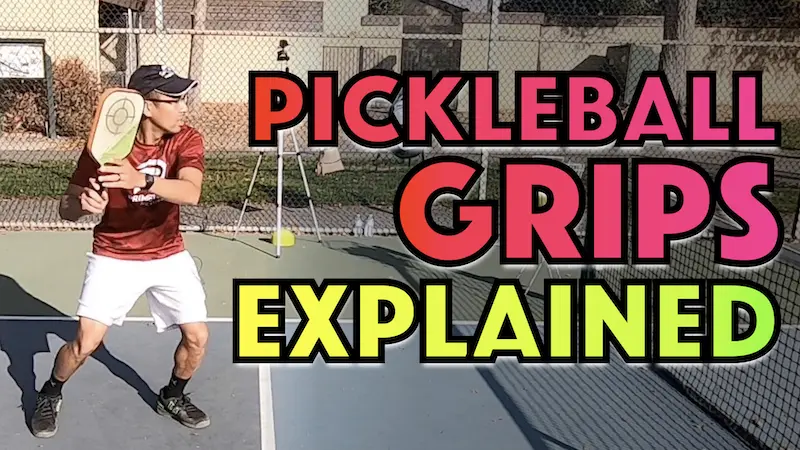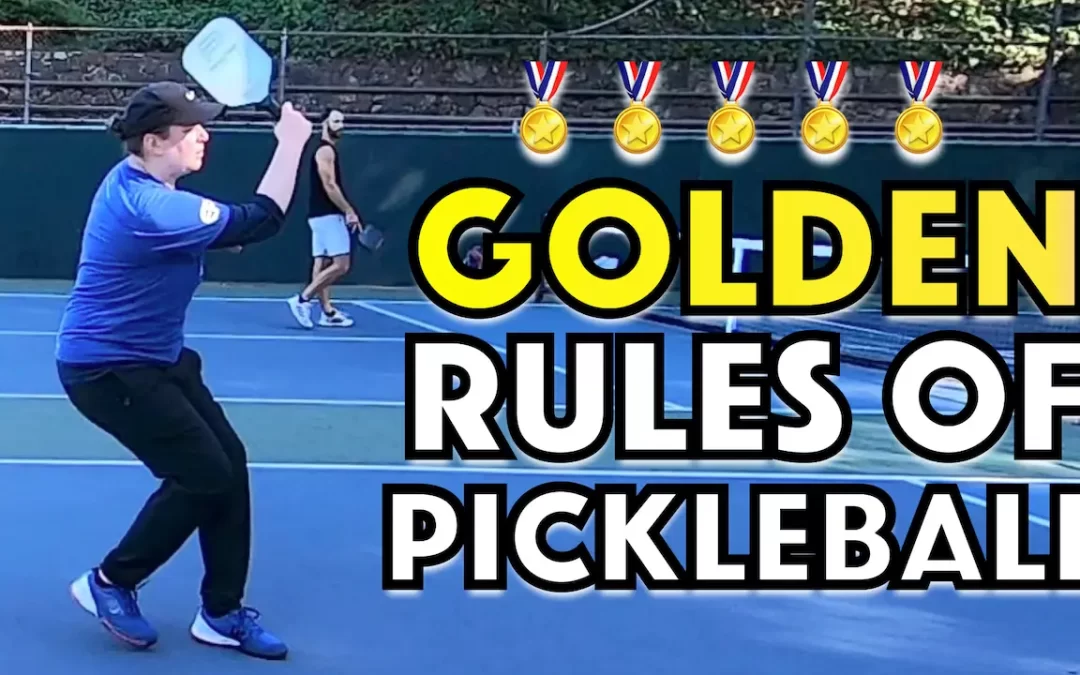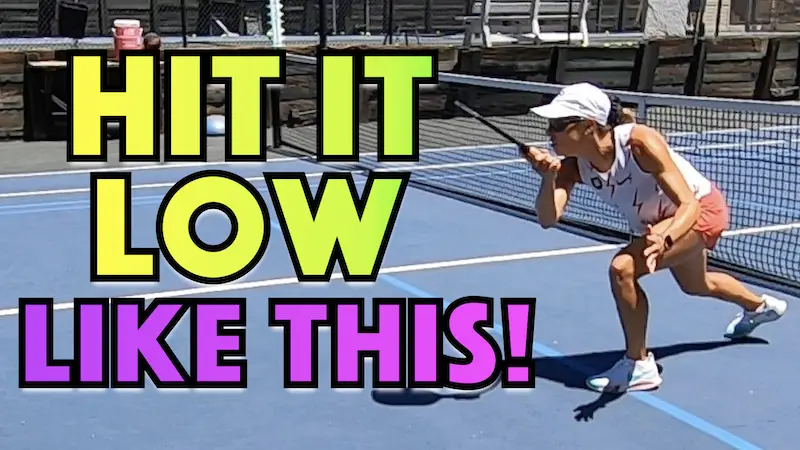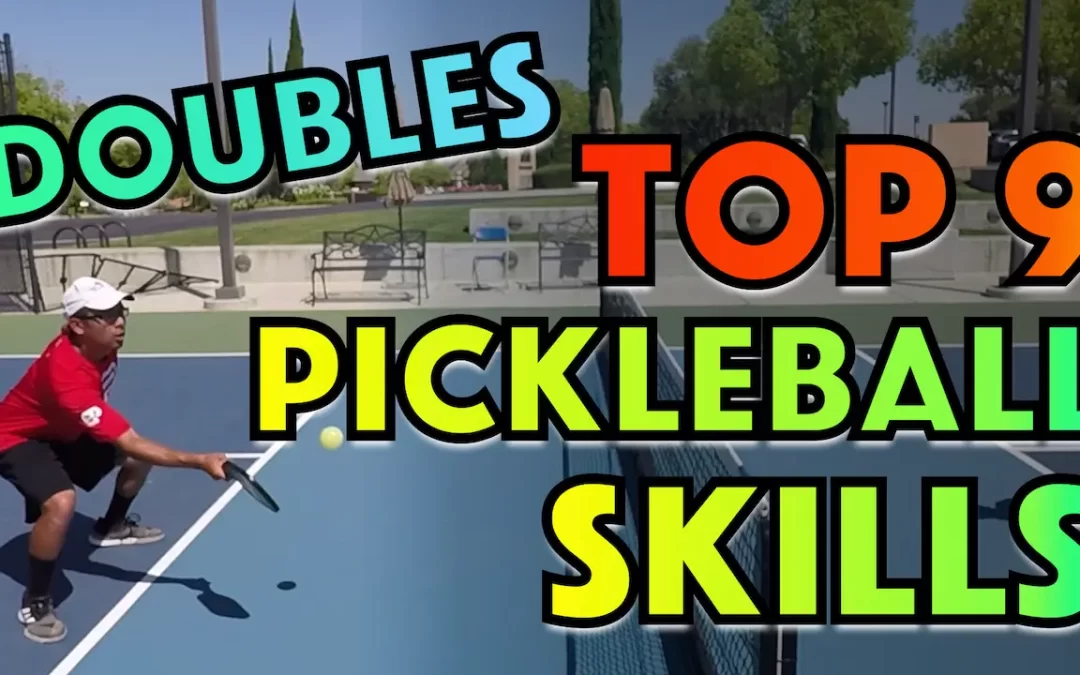There are a few common issues that seem to come up again and again as we observe players dinking technique during play.
Most of them could be fixed pretty easily with a little attention and drilling.
Most people are simply unaware that a few little tweaks could improve their dinking considerably.
With that in mind we came up with this video on the 5 Keys To Successful Dinking.
Check it out and make sure that you’re doing all 5 as you dink.
Key #1: The Dink Grip – Continental
The first key to having a successful dink is to use the correct and most versatile grip from which you can most easily hit a forehand dink as well as a backhand dink.
It’s very important that you only have one grip that you can use for all shots if needed when up at the net because if you get attacked there is no time for a grip change.
The best grip to use for dinking as well as volleying and pretty much everything at the net is the continental grip.
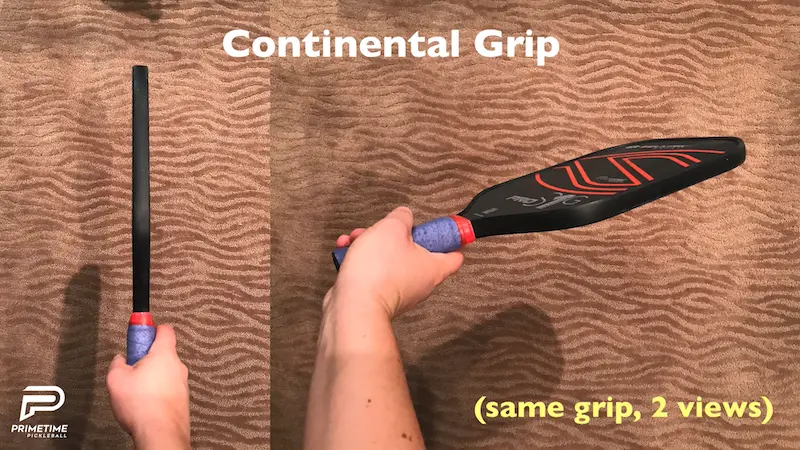
So, how do you find the continental grip?
Hold your paddle with one edge up and one edge down. Now, look at the part of you grip that is currently on top when you hold the paddle this way. Let’s say that is 0 degrees.
Next, assuming you’re a right handed player, you will want to place the index knuckle of your right hand at the 45 degree position of the grip in such a way that your whole hand is still on the grip.
Most people want to hold it too far over to the right with there index knuckle at the 90 degree position. That is an Eastern Forehand grip, not Continental. In that position, you will have a hard time hitting a backhand dink.
Key #2: Dink Swing Path
When dinking you will want to have a low to high consistent swing path.
The paddle should not come behind your body. This is where a lot of players get in trouble. They take their paddles too far back behind them which makes it harder to time, leads to a late contact point and causes pop ups.
It’s good to have a short and compact follow through with a contact point out in front.
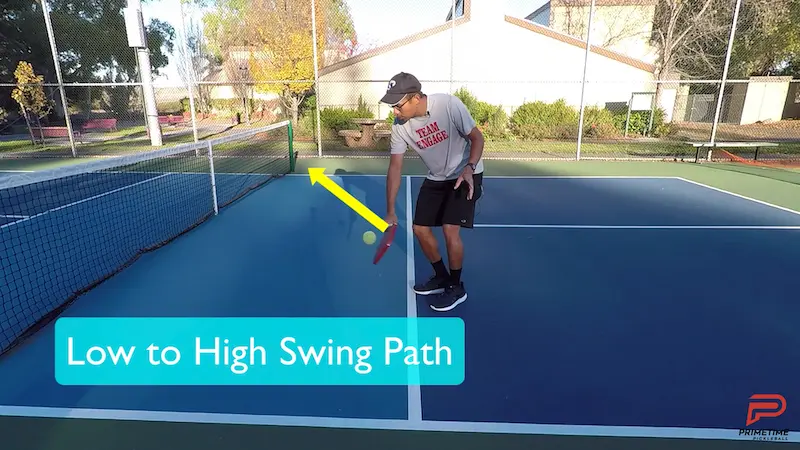
Start the dink low and with a very short backswing and end with a short follow through. It’s more of a gentle push than a swing.
Too often we see far too big backswings and long follow throughs.
If you have too long of a follow through when that close to the net, not only is your dink likely to go too far but you also won’t be ready for the ball that is coming back because you are still following through when your paddle should already be in ready position awaiting the dink reply.
Key #3: Using Your Legs On The Dink
It’s very important to use your legs when dinking. Too often we see players bending at the waist and back with straight and stiff legs.
Not only is this hard on your back and may lead to injury over time but it also makes it very hard to move when the dink is hit away from you.
You’ll want to get low with bent knees and a straight back for those dinks and push from the legs. Don’t forget to also move your feet.
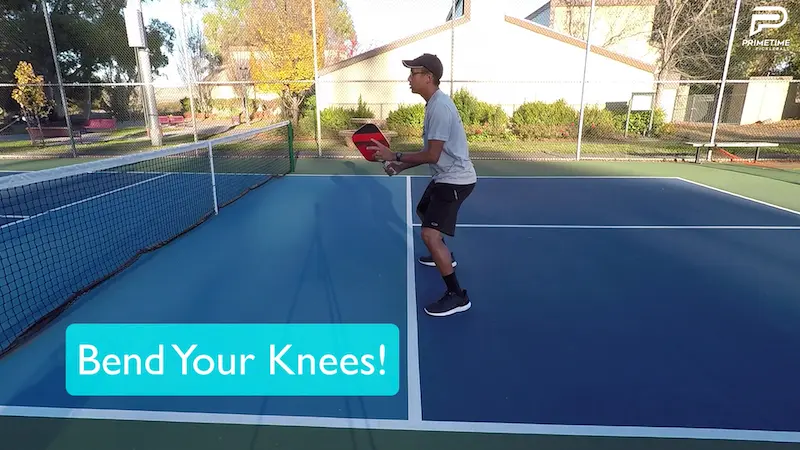
Use the energy from you legs and let that be what pushes your paddle forward and consequently the ball over the net.
If you use your legs, this will also help minimize the swing needed on the paddle that we discussed earlier and you will have far more control for the shot if the energy that propels the shot is coming from you legs.
Key #4: Dinking Net Clearance
It’s a very common misconception in pickleball that you have to hit low and tight to the net in order to keep the ball low on the other side and have an effective dink. This is incorrect.
The key is to keep it soft and short. You don’t have to hit it low to the net in order to accomplish this.
You can hit excellent dinks that get good, high margin net clearance. Give at least a foot or a foot and a half of space over the net for clearance on your dinks.
It’s not about the height, it’s about the depth. Remember to give a margin of error on your dinks.
Key #5: Keep Your Dink Short in the Kitchen
Far more important that hitting the dink low, is to hit it short in the kitchen.
If you hit it short, it will generally stay low, even if you hit it a foot and a half over the net.
You don’t want your opponent to be able to take that ball out of the air because there is a chance they will attack it if it’s high enough. If they are forced to let it bounce or if they make very low contact on a volley dink then chances are they will have to dink back and can’t attack.
We hope you guys enjoyed this blog! Go out there and practice these helpful tips.
Get our free 3rd shot course here! –> 3rd Shot Drop Course


